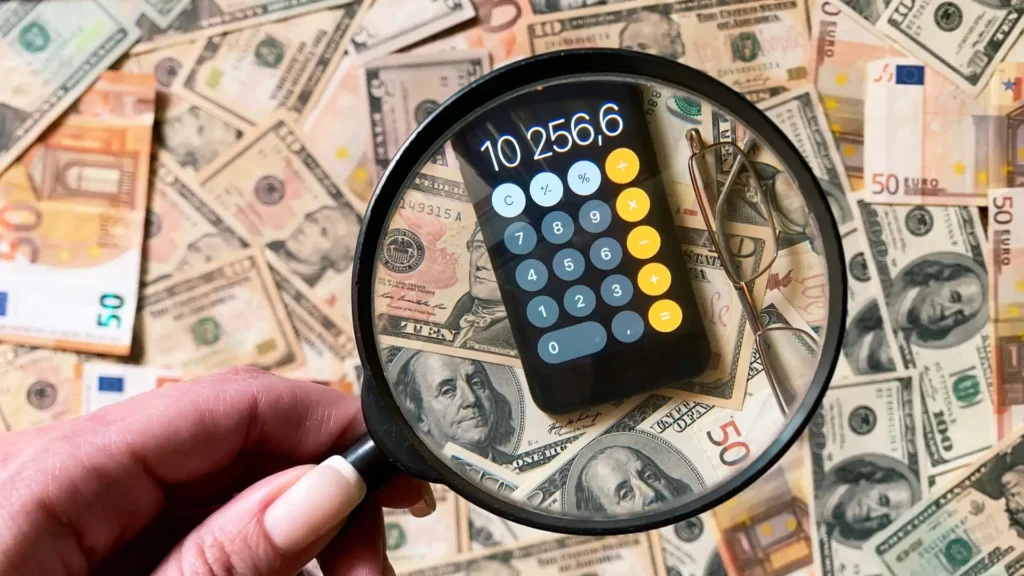Do you ever wonder where your money keeps going, even when you’re trying to save? As a student, it’s easy not to see when small habits turn into daily habits. A quick coffee, a fast meal, or a late snack might look small, but they stack up quickly.
Blitz has a tool called BudgetGPT that helps you see your merchant frequency—how often you spend at the same stores or apps. It tracks your repeat purchases, shows your top spending spots, and helps you cut back without feeling restricted.
This blog will show you the hidden impact of merchant frequency on your budget and how BudgetGPT can help you save more each month by making smarter, more mindful choices.
What Is Merchant Frequency?
Merchant frequency is the number of times you spend money at the same location. It might be your neighborhood coffee house, a website you buy things from, or a restaurant you go to too frequently. These buys might feel small alone, but when done lots in a week, they start to hit your cash.
Here are some common high-frequency merchants:
- Buying coffee shops from the same cafe, like Starbucks
- Using the same food delivery apps like DoorDash for ordering food
- Doing online shopping from the same platforms like Amazon,
- Going to the same local store, like 7-Eleven, to purchase something
Why Merchant Frequency Impacts Your Budget?
Spending money at familiar places can feel safe, especially for small amounts. However, these repeated purchases can add up over time and take a big bite out of your budget. You might not notice this happening since it feels so routine.
Many of them are based on a pattern, comfort, or reward program. Although they sound beneficial, they cause you to spend more than you intend. Here are a few reasons why merchant frequency quietly affects your money:
Small purchases add up
A $5 coffee might not seem like a lot, but if you buy it three times a week, that’s $15. In a month, that’s $60. Without seeing, you might spend lots on things you don’t think twice on. Here’s How BudgetGPT Can Help You Avoid Overdrafts.
Daily habits can become automatic
When you go to the same shop or order from the same app daily, it is included in your routine. You might find yourself spending money on autopilot, even when you don’t need anything.
Emotional spending
When bored, exhausted, or under pressure, it’s simple to spend money. Snacks, quick food, or sporadic internet purchases might appear to be a quick mood lift, yet repeating this often causes money to go more rapidly than anticipated.
Convenience spending
The convenience of picking the closest store or ordering through food apps saves time but tends to cost more. The convenient solutions all too often result in greater expenditures than doing things carefully or cooking at home.
Loyalty traps
Rewards points and membership benefits may seem like great money-saving ideas, but they can cause you to spend more money just to trigger a free product or discount. Usually, the “free” reward ends up costing more than it saves.
Losing track
When you buy the same things over and over, they become invisible. You stop noticing how often you spend. Your balance can drop faster than you think, even without a big purchase.
Impulse buying
Frequent visits to the same stores or apps raise the odds of spontaneous buys. One thing you may choose to get could result in two or three extras you had not intended to buy.
How to Analyze Your Merchant Frequency?
Knowing how much time you’re spending at the same locations is the beginning of taking control of your cash. Monitoring your merchant frequency makes you observe trends that are hard to realize and empowers you to make wiser financial decisions. Here’s how you can simply and efficiently do it.
Tracking Your Transactions
Tracking your transactions helps you see which merchants you spend money on the most. You can use a budgeting app or check your bank statement. Make a list of the stores, apps, or services that appear the most.
Once you have this list, you’ll start to see just how often you visit certain places. It gives you a clear picture of your spending habits and shows you which places take up the biggest part of your budget.
Find Spending Patterns
After watching your spending, look at when & why you go to some shops. It might be that the shop is near your school, or maybe it’s just part of your daily run. Sometimes, notifications or social ads can also push you to buy more often.
By finding these trends, you can take control of your picks. Once you know what drives your spending, it gets easy to make changes. Small changes, like missing a visit or planning, can help you save without feeling tied down.

Strategies to Manage Merchant Frequency
Once you track how often you go to some store or app, you can learn to control those habits. Managing your merchant frequency helps you avoid overspending and stay on budget. These practical strategies will help you spend deliberately while you are enjoying what you love.
A. Setting Limits and Alerts
Set a weekly or monthly limit on trips to your favorite places, such as coffee shops or fast food. When you reach that extent, use the alert spending in the budget application to inform you. It keeps you on track and helps to avoid impulse buying. Over time, you may realize that you do not miss those additional trips as you thought.
B. Finding Alternatives and Reducing Visits
Look for cheap or healthy options that meet your needs. Creating coffee at home or bringing snacks can help you avoid unnecessary stops. Further planning prevents you from spending out of convenience. Smart Swap allows you to enjoy your day without harming your budget.
C. Leveraging Loyalty Without Overspending
The loyalty program can save you money, but use it wisely. Do not spend too much to get a reward or discount. What you need and enjoy savings when you come naturally. Real awards come from smart expenses, not chasing points. Here’s How to Use Blitz Insights to Improve Financial Health.
D. Using Cash for Limits
Try to use cash for small items such as snacks, coffee, or fast food. Keep a little cash each week and stop when it goes. It determines a firm border that helps manage your cash flow. When the cash comes out, you have no option left.
E. Turning Off Notifications
Shut off notifications from stores and delivery apps that push you to buy. These alerts often lead to unplanned buys. With fewer reminders, you’ll likely feel less pushed to grab something “just because.” A quieter phone means a quieter budget, too.
F. Reviewing Weekly Habits
At the end of the week, spend a few moments reviewing your spending. Note the stores you visited most and how often. This weekly look helps you stay aware and in charge. Spotting trends early makes it easier to alter them before they grow big.
Benefits of Monitoring Merchant Frequency
Tracking how much time you spend on some stores or apps can change your money management. This helps you notice small habits, avoid surprise expenses, and make smart choices for your budget and goals. Here are some monitoring benefits:
Better financial awareness
Knowing your favorite stores makes it simpler to notice where your money goes. Rather than speculating as to why your balance keeps going down too fast, this awareness lets you manage spending.
Smarter spending choices
Recognizing patterns enables one to identify which transactions genuinely count and which are habits. This makes it simpler to reduce unneeded items without feeling like you are missing out.
More control over the budget
Monitoring the merchant frequency allows you to adjust the budget with real data. You can decide realistic boundaries on how many times you can go to some places and avoid overspending without having to trust or rely on will.
Less emotional spending
Tracking repeated visits helps you understand that emotions act when you act. If you notice a pattern of expenses to gets you tired or stressed, you can take steps to change the habit before it affects your finances.
Improved saving habits
When you reduce how many times you make unnecessary shopping trips, you naturally make more room in your budget. Even cutting a few trips within a month may be free of savings, goals, or other important preferences.
Fewer surprise expenses
When you start monitoring the merchant frequency, you are less likely to forget small, frequent payments. This helps prevent conditions where your account suddenly falls because you did not realize that this happens often.
Stronger long-term habits
The more you monitor and manage how many times you shop in the same place, the more confident you are in handling finances. These short steps help create long-lasting habits that support financial freedoms and smart monetary alternatives.
Read: How to Use BudgetGPT to Set and Reach Your Savings Goals
Conclusion: Hidden Impact of Merchant Frequency on Your Budget
Tracking your money should be easy, not hard. Merchant frequency reveals hidden habits that can empty your wallet. With tools like BudgetGPT, you can spot repeat spending, set limits, and not waste cash on needless stuff.
Once you start watching your top merchants, you can change costly habits and stick to your budget. You gain better control, fewer surprises, and smarter ways to save. Small changes, like cutting one or two visits a week, can lead to real savings over time.
Ready to control your money? Download the Blitz app and have BudgetGPT track, evaluate, and optimize your spending for you. One tap and your smarter budget begins.




